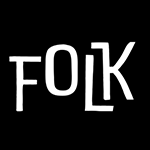"Finding Home" is now available on Amazon.
The Healing Power of Creative Writing: Using Words to Navigate Emotions
Creative writing is a powerful tool for expressing emotions and fostering self-awareness. For those of us in our golden years, writing can be a therapeutic activity that helps navigate complex feelings and reflect on life experiences. Whether through personal journaling, short stories, or poetry, writing offers a unique way to connect with and understand our emotions. Here’s an exploration of the benefits of creative writing, along with practical tips on how to get started on your own writing journey.
The Benefits of Creative Writing
Creative writing offers numerous benefits for emotional well-being and self-awareness:
Emotional Expression
- Safe Outlet: Writing provides a safe and private outlet for expressing emotions that might be difficult to share with others.
- Clarity and Insight: Putting thoughts and feelings into words can help clarify emotions and provide new insights into personal experiences.
Stress Reduction
- Relaxation: The act of writing can be calming and meditative, helping to reduce stress and promote relaxation.
- Mindfulness: Writing encourages mindfulness by focusing your attention on the present moment and the words you are crafting.
Self-Awareness and Growth
- Reflection: Writing allows for deep reflection on life events, relationships, and personal growth.
- Empowerment: Creating stories, poems, or journal entries can be empowering, giving you a sense of control and accomplishment.
Getting Started with Personal Journaling
Personal journaling is a simple yet effective way to start using creative writing to navigate emotions:
Choose Your Medium
- Traditional Journal: A notebook or diary is a classic choice for personal journaling. Choose one that feels comfortable and inviting.
- Digital Journal: Digital platforms, such as writing apps or online journals, can be convenient and easily accessible.
Establish a Routine
- Set a Schedule: Set aside a regular time each day or week for journaling. Consistency helps make writing a habit.
- Create a Comfortable Space: Find a quiet, comfortable space where you can write without distractions.
Prompts and Techniques
- Daily Reflections: Write about your daily experiences, thoughts, and feelings. Reflect on what went well and what challenges you faced.
- Gratitude Lists: Make lists of things you are grateful for. This can help shift your focus to positive aspects of life.
- Emotional Exploration: Write about specific emotions you are experiencing. Describe how they feel, what triggered them, and how you can manage them.
Writing Short Stories and Poems
If you’re interested in more structured creative writing, short stories and poems offer wonderful avenues for emotional expression:
Short Stories
- Character Development: Create characters that reflect different aspects of yourself or people you know. Explore their emotions and journeys.
- Plot Creation: Develop plots that mirror your own experiences or imagine new scenarios that allow you to explore different emotions.
- Themes and Symbols: Use themes and symbols to convey deeper meanings and emotions in your stories.
Poems
- Free Verse: Start with free verse poetry, which doesn’t require a specific rhyme or meter. Focus on expressing emotions and ideas freely.
- Imagery and Metaphor: Use vivid imagery and metaphors to convey emotions in a powerful and evocative way.
- Short and Sweet: Poems can be short and impactful. Don’t worry about length; focus on capturing the essence of your feelings.
Practical Tips for Creative Writing
Here are some practical tips to help you get started with creative writing:
Overcoming Writer’s Block
- Write Freely: Don’t worry about grammar, spelling, or structure in your initial drafts. Let your thoughts flow freely.
- Set Small Goals: Start with small, manageable writing goals, such as writing for 10 minutes a day or completing a single poem.
- Use Prompts: Writing prompts can spark creativity. Look for prompts online or create your own based on personal experiences and emotions.
Finding Inspiration
- Read Widely: Read books, articles, and poetry that inspire you. Exposure to different styles and genres can spark new ideas.
- Observe and Reflect: Pay attention to your surroundings, conversations, and daily experiences. Use these observations as inspiration for your writing.
- Join Writing Groups: Participate in writing groups or workshops to connect with other writers, share your work, and gain feedback.
Staying Motivated
- Celebrate Progress: Acknowledge and celebrate your writing achievements, no matter how small.
- Keep a Writing Journal: Maintain a separate journal to jot down ideas, quotes, and inspiration for future writing projects.
- Write for Yourself: Remember that your writing is for you. Focus on expressing your emotions and thoughts authentically, rather than aiming for perfection.
Conclusion
Creative writing is a powerful tool for navigating emotions and fostering self-awareness. Whether through personal journaling, short stories, or poetry, writing provides a therapeutic outlet for expressing feelings and reflecting on life experiences.
Start today by setting aside time to write and exploring different forms of creative writing. Embrace the journey of self-discovery through words and discover the healing power of expressing your emotions on paper. Remember, there’s no right or wrong way to write—what matters most is that your writing resonates with you and helps you connect with your inner self.
Allow this Muse to inspire your next creative work.
Source: OpenAI. (2024). ChatGPT (4o) [Large language model]. https://chatgpt.com
